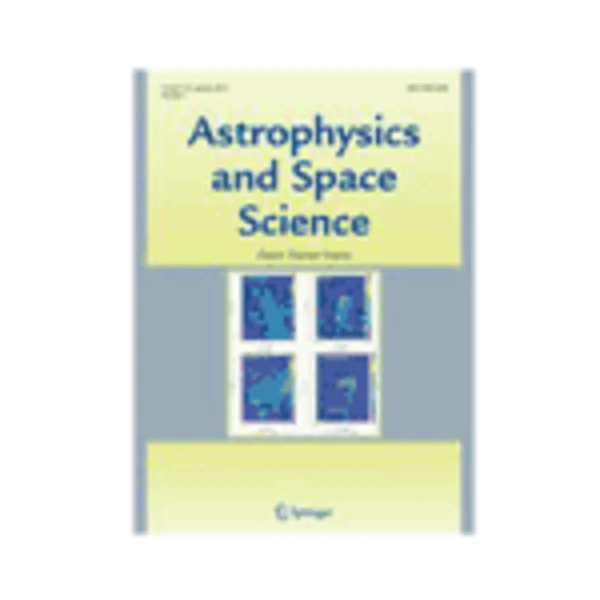-
surface brightness fluctuations as primary and secondary distance indicators
جزئیات بیشتر مقاله- تاریخ ارائه: 1392/07/24
- تاریخ انتشار در تی پی بین: 1392/07/24
- تعداد بازدید: 1019
- تعداد پرسش و پاسخ ها: 0
- شماره تماس دبیرخانه رویداد: -
the surface brightness fluctuations (sbf) method measures the variance in a galaxy’s light distribution arising from fluctuations in the numbers and luminosities of individual stars per resolution element. once calibrated for stellar population effects, sbfmeasurements with hst provide distances to early-type galaxies with unrivaled precision. optical sbf data from hst for the virgo and fornax clusters give the relative distances of these nearby fiducial clusters with 2% precision and constrain their internal structures. observations in hand will allow us to tie the coma cluster, the standard of comparison for distant cluster studies, into the same precise relative distance scale. the sbf method can be calibrated in an absolute sense either empirically from cepheids or theoretically from stellar population models. the agreement between the model and empirical zero points has improved dramatically, providing an independent confirmation of the cepheid distance scale. sbf is still brighter in the near-ir, and an ongoing program to calibrate the method for the f110w and f160w passbands of the wide field camera 3 ir channel will enable accurate distance derivation whenever a large early-type galaxy or bulge is observed in these passbands at distances reaching well out into the hubble flow.
مقالات جدیدترین رویدادها
-
استفاده از تحلیل اهمیت-عملکرد در ارائه الگوی مدیریت خلاقیت سازمانی و ارائه راهکار جهت بهبود
-
بررسی تاثیر ارزش وجوه نقد مازاد بر ساختار سرمایه شرکت های پذیرفته شده در بورس اوراق بهادار تهران
-
بررسی تأثیر سطح افشای ریسک بر قرارداد بدهی شرکت های پذیرفته شده در بورس اوراق بهادار تهران
-
بررسی تأثیر رتبه بندی اعتباری مبتنی بر مدل امتیاز بازار نوظهور بر نقد شوندگی سهام با تأکید بر خصوصی سازی شرکت ها
-
تأثیر آمیخته بازاریابی پوشاک ایرانی بر تصویر ذهنی مشتری پوشاک ایرانی (هاکوپیان)
-
شبیه سازی یک بعدی جریان ناشی از شکست سد بر بسترهای متحرک
-
نقش اکوتوریسم در توسعه اقتصادی ایران با تاکید بر مناطق حفاظت شده
-
تخمین آب انداختگی بتن خود تراکم با استفاده از پردازش تصویر
-
بررسی تغییرات طول آبشستگی پایین دست کف بند افقی زبر
-
تحلیل عددی تأثیر سربار بر فشار جانبی خاک وارد بر اسکله وزنی بلوک بتنی گوژپشتی
مقالات جدیدترین ژورنال ها
-
مدیریت و بررسی افسردگی دانش آموزان دختر مقطع متوسطه دوم در دروان کرونا در شهرستان دزفول
-
مدیریت و بررسی خرد سیاسی در اندیشه ی فردوسی در ادب ایران
-
واکاوی و مدیریت توصیفی قلمدان(جاکلیدی)ضریح در موزه آستان قدس رضوی
-
بررسی تاثیر خلاقیت، دانش و انگیزه کارکنان بر پیشنهادات نوآورانه کارکنان ( مورد مطالعه: هتل های 3 و 4 ستاره استان کرمان)
-
بررسی تاثیر کیفیت سیستم های اطلاعاتی بر تصمیم گیری موفق در شرکتهای تولیدی استان اصفهان (مورد مطالعه: مدیران شرکتهای تولیدی استان اصفهان)
-
پیام حفاظت معماری در شمای ارتباطی یاکوبسن
-
علل پیشرفت و تعالی در جامعه از دیدگاه اسلام و قرآن
-
بررسی عددی انتقال حرارت جابجایی آزاد از دسته لوله داغ با دمای متغیر
-
مقایسه اصول حقوق بشر دوستانه بین الملل با رویکرد اندیشه حضرت امام خمینی (ره)
-
تأثیرات چند سطحی جهت گیری کارآفرینی شرکت ها بر نوآوری بنیادی و عملکرد مالی (مورد مطالعه: موسسه حسابرسی بهراد مشار)




سوال خود را در مورد این مقاله مطرح نمایید :